This article was co-authored by Dorrenda Smith. Dorrenda “Renny” Smith is a Personal Chef and the Co-Founder & CEO of The Crain Experience. With almost 15 years of experience in the food industry, she specializes in creating soul food with a healthier spin. Chef Renny and her partner provide event catering, event planning, and restaurant and food truck consultations.
This article has been viewed 76,673 times.
The most difficult aspect of cooking healthily today is sorting through all of the conflicting information about nutrition that bombards us. Healthy cooking is an important decision that will prevent many chronic illnesses and dysfunctions, as well as keep you feeling and looking your best. The keys to healthy cooking include getting back to whole foods, using fresh ingredients and choosing the right proportions of healthy foods like fruits and vegetables.
Steps
Include Fruit
Raw fruit is delicious on its own, but finding surprising ways to incorporate fruit into your cooking gives you a chance both to add nutritional value and to tap into your creativity.
-
1Use fresh, local fruit that is in season. Cook with citrus in the spring, berries in summer and apples and pumpkin in the fall. Food prepared at the peak of its freshness has unbeatable flavor and nutritional value.
-
2Avoid adding table sugar to fruit dishes. Instead, choose healthy ways to enhance the flavor of fruit in your cooking. For example, serve baked apples with frozen yogurt, cinnamon, walnuts and dried cranberries; or add balsamic vinegar to strawberries to bring out their natural sweetness.
- Natural sugars are always going to be preferable to refined sugar. You can even use a substitute, like monk fruit sugar.
Advertisement -
3Don't forget juices and dried fruits. Fruit juice and dried fruit, when used in moderation, is a healthy addition to many meals. Cook a dish like Moroccan chicken with dried plums to boost the fiber content of the dish, or use freshly squeezed orange juice to give a citrus kick to a salad dressing.
-
4Use fruit purees in place of fat when baking. Applesauce is a great substitute for vegetable oil in muffin and bread recipes. You'll have to do some research to calculate just how much fat you can replace with fruit in your recipes, but the fruit can add the same moisture to your dishes without making your fingers greasy, so it's worth it.
Prepare Vegetables
One of the most important skills in the healthy cook's arsenal is the skill of preparing vegetables in a delicious way without zapping out all of their nutrients in the cooking process. Bland, overcooked vegetables will never motivate you to add more vegetables to your diet.
-
1Buy fresh vegetables in season. Asparagus, spinach and scallions are best in the spring. Many vegetables, like tomatoes, squash and Swiss chard are good in the summer. Root vegetables like acorn or butternut squash bring warmth to any autumn table. And if you live in a warm climate, you can explore options of cultivating your own vegetable gardens to get the most selection based on your tastes.
- Organic vegetables are always going to be healthier than inorganic options.
-
2Choose healthy cooking methods when you prepare vegetables. Burying vegetables in butter, preparing them with animal fat or dousing them in oil adds many extra calories without adding nutritional value. Try steaming or roasting with a little bit of avocado or olive oil for nutritious and delicious preparations.
- Even though too much fat is not beneficial, adding some plant-based fats like olive or walnut oil to your deep greens (like leafy greens, broccoli and Brussels sprouts) actually helps your body absorb more of their nutrients.
- Don’t overcook your greens! The darker or the limper your veggies become, the more overcooked they are. Overcooking can remove essential nutrients from your greens.
-
3Don't forget frozen as an option. Freezing vegetables in season and storing them for future use is an easy way to get the flavor of the harvest all year round. For quick dishes, choose frozen, pre-chopped organic vegetables from your grocery store.
Choose Whole Grains
For a wide variety of grain choices, many shoppers used to make special trips to a natural foods store. Now, delicious, healthy whole grains can be found in almost any supermarket.
-
1Avoid refined carbohydrates. For example, choose to replace white bread with whole wheat or rye. Also, whole wheat pastas have improved greatly in quality since they were first introduced to the market.
-
2Cook creatively with whole grains. For instance, add barley to beef stew or make a whole grain pilaf with sliced almonds and dried fruit.
-
3Try something new. Learn to cook with quinoa, spelt or couscous so that you can have a break from rice and pasta.
Select Healthy Proteins in the Right Proportions
In many households, a big slab of meat tends to dominate the dinner plate. Choosing healthier proteins and healthy portion sizes will allow you to enjoy protein without all of the associated health hazards.
-
1Choose proteins high in omega-3 fatty acids. Foods like salmon and omega-3 enriched eggs are great sources of omega-3 fatty acids. These nutrients promote healthy brain function as well as cardiovascular health.
-
2Remember non-meat sources of protein. You can eat servings of protein that are lower in calories and higher in fiber by choosing proteins like beans or tofu. Chop up some tofu and add it to soup or serve bean and cheese enchiladas with a side of rice in place of meat enchiladas.
-
3Watch your portion size. A good rule of thumb is to remember that a serving size of protein is about the size of a deck of cards. Generally, a piece of meat or other protein should be no larger or thicker than your palm.
Include Healthy Dairy
Calcium and Vitamin D from dairy are essential nutrients, but many dairy products also deliver an unhealthy dose of fat. Learning to choose low-fat dairy while maximizing flavor will allow you to enjoy the benefits of dairy without all of the added fat.
-
1Learn to cook with low-fat dairy options. In many recipes, heavy cream or whole milk can be replaced with low-fat or skim milk. Be careful when baking to stick to reduced fat dairy rather than fat-free dairy.
-
2Become more versatile with yogurt. Yogurt is delicious eaten out of the container, but plain yogurt can also be served in soups or used as a marinade for meats. Salmon served with a lemon and dill yogurt sauce, for example, makes a nutrient-packed and elegant meal. Look to food from Middle Eastern and Indian cultures to inspire you to find more ways to use yogurt in your cooking.
-
3Focus on flavor instead of quantity when cooking with cheese. If you purchase a high-quality, flavorful cheese, then you can use less cheese and still add flavor to your cooking. Grate pecorino on top off a pizza and cut down on the mozzarella, or sprinkle a little bit of Gorgonzola on a salad instead of heaps of mild cheddar.
Use Healthier Fats in a Strategic Way
Healthy fats are important, both for our health and for our satiety. Cook with healthy fats in moderation; don't completely avoid this important part of a healthy diet.
-
1Choose oils and fatty foods that are low in saturated fat. Olive oil and canola oil are the healthiest oils that you can use in your cooking. Other nut and seed oils also make healthy choices. Prepare fatty fish like salmon or mackerel instead of beef. Avocados are also an excellent source of healthy fats.
-
2Avoid trans fats. Trans fats are found in foods that have been hydrogenated so that they can maintain shelf stability at room temperature. These fats are universally understood to be bad for your health, and they hide in places you might not expect. Before you roll a piece of chicken in bread crumbs, check the package to make sure that the crumbs don't contain trans fats. Also, avoid margarine and shortening in your cooking whenever possible.
-
3Remember that quality can lower quantity. Investing in an excellent olive oil for cooking allows you to put more flavor in your food even while using less oil. Another idea is to choose a creamy European butter; the intense flavor will allow you to cut the butter content in your cooking by at least one-third.
Community Q&A
-
QuestionWhat if I can't consume dairy products?
 Community AnswerThere are plenty of alternatives today that are rich in protein, like tofu, beans, etc. Plus, you can use vitamins or supplements if you're lacking in anything, like calcium.
Community AnswerThere are plenty of alternatives today that are rich in protein, like tofu, beans, etc. Plus, you can use vitamins or supplements if you're lacking in anything, like calcium.
Warnings
- Following a fad diet does not equal cooking healthily. Avoid altering your menu to accommodate a trendy diet, like a low-carb diet. Instead, cook with wholesome and healthy whole foods and avoid processed foods.⧼thumbs_response⧽
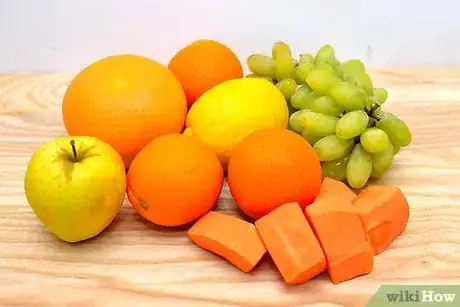


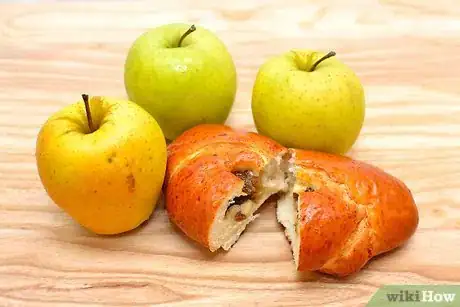
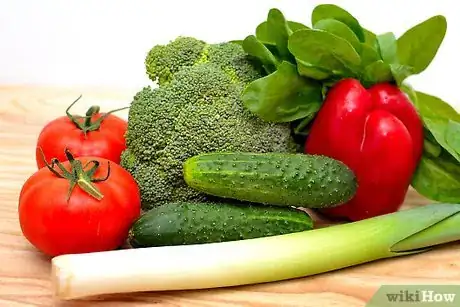

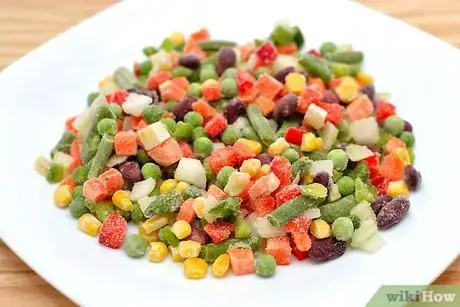

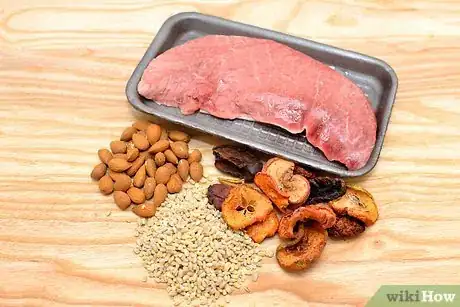

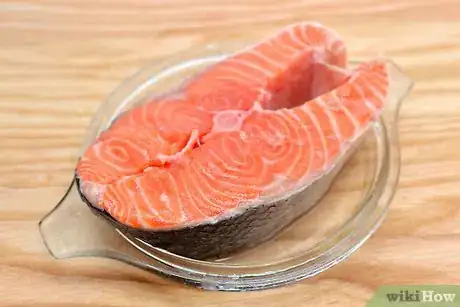
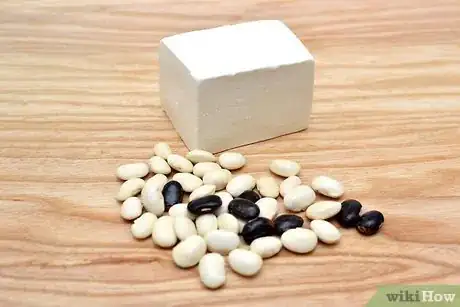





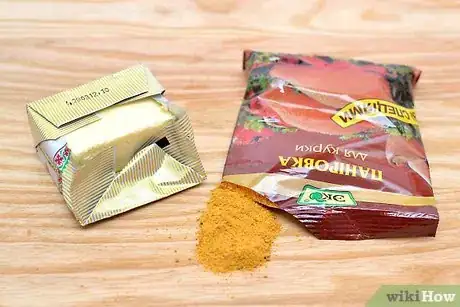
























































Medical Disclaimer
The content of this article is not intended to be a substitute for professional medical advice, examination, diagnosis, or treatment. You should always contact your doctor or other qualified healthcare professional before starting, changing, or stopping any kind of health treatment.
Read More...